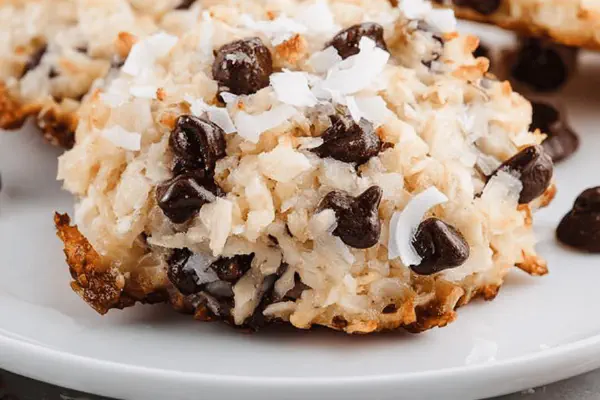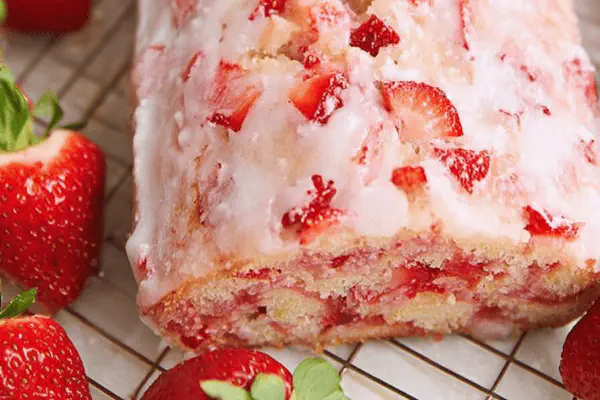Jam Thumbprint Cookies

By Emma
Certified Culinary Professional
Ingredients
- 2 cups all-purpose flour
- 1 cup unsalted butter softened
- 3/4 cup granulated sugar
- 2/3 cup light brown sugar packed
- 1 large egg
- 1/2 teaspoon almond extract substitute with 1/2 teaspoon vanilla or grated orange zest
- 1/4 teaspoon salt
- 1/2 cup seedless jam any flavor
- Glaze ingredients
- 1 cup powdered sugar sifted
- 1/4 teaspoon almond extract
- 2 tablespoons cream or milk may need more
- Extra flour for dusting utensil
About the ingredients
Method
Dough and shaping
- Line 2 large baking sheets with parchment or silicone mats. No skip here or cookies stick. Butter, sugars—cream them till fluffy and pale. Scrape sides. Add egg, then almond extract, swirl. Salt goes next, evenly mixed.
- Flour comes last, slowly. Watch dough firm up, stiff but not crumbly. If breaks, mix a little longer but no overdo or tough cookie. Scooping with a 1 ½ tablespoon scoop gets consistent size. Drop balls with space to spread slightly.
- Take a rounded teaspoon or clean thumb—dust with flour if sticky. Press thumb to make an indentation, not too deep or jam will overflow ruin shape.
- Fill each well with a rounded teaspoon of jam. Let jam mound just a bit above dough edge, jewel-like.
- Chill entire trays 30 minutes. Chill locks shape preventing flattens in oven.
Baking
- Oven preheated to 350°F. Keep an eye. Around 13 minutes edges set and firm but no brown. Watch that soft center jiggle; it’s the cue.
- Remove to wire rack after cooling 10 minutes on sheet. Cooling firm but still tender—hard to resist a nibble here.
Glaze
- Powdered sugar, almond extract, and 1 tablespoon cream whisked until nice lump free. Add cream teaspoon by teaspoon till glaze thick yet drizzly. Too runny and bleeds off; too stiff and hard to pipe or drizzle.
- Drizzle over cooled cookies. Let set 5-10 minutes before serving or storing. Keeps well in airtight container for a few days, jam may soften dough but still good.
Tips and fixes
- If dough too crumbly, add tiny splash milk or extra egg yolk to bind. Overmixing flour toughens cookie; fold gently when adding flour. Jam with chunks muddles indent shape—seedless smooth works better.
- If you have trouble with jam overflow, refrigerate jam beforehand—chill thickens it.
- Use granulated sugar for crunch; brown sugar adds chew and deeper flavor.
- Experiment with extracts—vanilla, lemon, or orange work too.
- No cream for glaze? Use milk but check consistency carefully.
- Press indentations promptly after scooping. Dough warms and softens, indent harder later.
Cooking tips
Chef's notes
- 💡 Chill the dough at least 30 minutes. Without it, cookies flatten too much. Cold fat tightens, stops spread. Watch texture going into oven; dough should feel firm but pliable. Indent immediately after scooping—wait too long, dough softens and indentation hard to make. Press gently, not too deep or jam spills out. Seedless jams work best; avoids pits that ruin open wells.
- 💡 Cream butter and sugars until light and fluffy, takes more than a minute; scrape bowl sides so sugar fully aerates butter. Add egg and almond extract slowly, keeps air trapped, yields tender crumb. Salt goes next to evenly boost flavor before flour softens batter. Fold flour in gently at low speed or by hand, no overmix; overworked flour makes tough brittle cookies. Consistent scoop size equals even bake and uniform shapes.
- 💡 Jam thickness crucial; thin, runny jams bleed and flatten cookie centers. If jam too runny, refrigerate before usage to thicken. Fill wells just shy of overflowing, mound lightly for jewel effect. Bake at 350°F; edges cue doneness—firm, no color change, still pale. Check center wobble—soft but not raw. Timing near 13 minutes, but watch closely for cues; clock lies.
- 💡 Glaze texture a balancing act. Start with powdered sugar sifted fine, almond extract added first, then drizzle cream teaspoon by teaspoon. Too much cream = glaze runs off, too little makes piping difficult and clumpy. You want thick but flowy. Drizzle right after cookies cool but still slightly warm to help glaze set smooth. If no cream, milk works but glaze thins out; adjust powdered sugar to stiffen if needed.
- 💡 Flour dusted spoon or your thumb prevents sticking when making indents—important but easy overlook. Granulated sugar for crunch, brown sugar adds chew and caramel notes. Swap almond extract with vanilla or zest for different aromatic profiles; lemon or orange zest freshens up. Dough crumbly? Add tiny splash milk or extra egg yolk, better than more butter. Overmixing flours toughens cookies; fold gently, slow but sure.
Common questions
Why chill dough before baking?
Chilling firms fats, stops cookies from spreading all over, indentation holds shape. Also dries dough slightly for sturdier structure. Skip chill and cookies go flat, jam spreads out losing jewel look. Works better chilling trays, not just dough balls loose.
Can I use runny jam?
Best avoided but if stuck use jam chilled, fridge thickens it. Or reduce jam heat to evaporate some moisture. Seedless jams key for no pits sinking. Thicker jams hold shape better, give shiny pools. Thin jams pool around cookie, mess shape.
How to tell cookies are done?
Edges feel firm to touch but no brown. Center jiggles slightly but not raw looking. If edges hard with color, overbaked dries crumb. Watch timing closely; ovens vary. Cooling on sheet firms slightly while tender inside. Too soon means doughy middle, too late dry brittle bite.
How to store these cookies?
Airtight container best to keep crunch. Jam can soften edges over days but still edible. Cooler temps slow moisture migration but fridge can make cookies too hard. Room temp fine if eaten within few days. Separated layers with parchment stops sticking. Freeze unglazed dough or baked cookies for longer.



